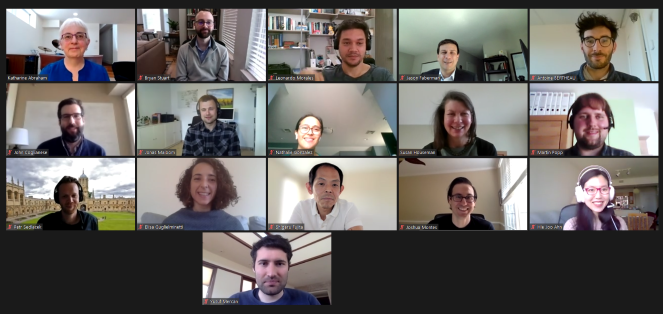Economists and policymakers rely on labor market indicators produced by statistical agencies to gauge the health of economies during recessions and recoveries, to identify labor market trends, and to develop policy responses to problems identified in the data. Yet, the data on which these analyses depend often provide an incomplete, noisy, or even biased picture of labor market conditions. In addition, the rapidity with which the global recession developed during the Covid-19 pandemic has underscored the need for more timely economic data than national statistical agencies typically provide, spurring the use of real-time data from proprietary sources.
The 4th IZA workshop on labor statistics, organized by Katharine Abraham and Susan Houseman, featured twelve papers that critiqued existing measures of labor market conditions, provided corrected or new measures, and made use of novel data to address substantive labor market questions.
Improving measures of labor market slack
Several workshop papers addressed problems with statistics designed to measure the degree of unemployment and underemployment (or “slack”) in labor markets. The data for calculating the unemployment and the labor force participation rates in the United States come from a monthly household survey in which households are surveyed a total of eight times. This allows one to observe how workers move between being employed, unemployed, and out of the labor force.
 Hie Joo Ahn and James Hamilton, however, point to large inconsistencies in the monthly estimates of the unemployment rate and labor force participation rate, on the one hand, and the movements between these labor force states over time. Part of the problem arises from the fact that the more times survey respondents are interviewed, the less likely they are to report being unemployed or part-time, or to answer survey questions at all, owing to stigma associated with being unemployed or underemployed. Correcting for these and other problems in the data, Ahn and Hamilton find that the unemployment rate and the labor force participation rate both are underestimated by about 2 percentage points.
Hie Joo Ahn and James Hamilton, however, point to large inconsistencies in the monthly estimates of the unemployment rate and labor force participation rate, on the one hand, and the movements between these labor force states over time. Part of the problem arises from the fact that the more times survey respondents are interviewed, the less likely they are to report being unemployed or part-time, or to answer survey questions at all, owing to stigma associated with being unemployed or underemployed. Correcting for these and other problems in the data, Ahn and Hamilton find that the unemployment rate and the labor force participation rate both are underestimated by about 2 percentage points.
Instead of correcting official measures, Jason Faberman, Andreas Mueller, Ayşegül Şahin, and Giorgio Topa propose a new measure, the “Aggregate Hours Gap,” to capture the degree of slack in labor markets. Their measure is derived from questions on desired hours worked in a household survey conducted by the Federal Reserve Bank of New York. They find that their measure performs as well as or better than the unemployment rate in accounting for changes in wages. Their measure also suggests that the recovery following the Great Recession was slower than suggested by the unemployment rate or other measures of labor market slack.
Using proprietary data to measure the economic impacts of Covid-19
Lags in the collection and publication of government data have hampered efforts to provide timely analysis of the impacts the pandemic recession is having on businesses and workers. To assess the widely held belief that small businesses and their workforces have been especially harmed by the recession in the United States, André Kurmann, Etienne Lalé, and Lien Ta use data from Homebase—a company that provides scheduling software primarily to small service-sector businesses—supplemented with business opening and closing information gleaned from Google, Facebook, and other online sources. Contrary to expectations, they find that, while small business employment was especially hard hit in the early stages of the recession, small businesses have rebounded and, on net, have not fared worse than larger businesses during the recession.
Links to these and other papers may be found on the workshop program.
